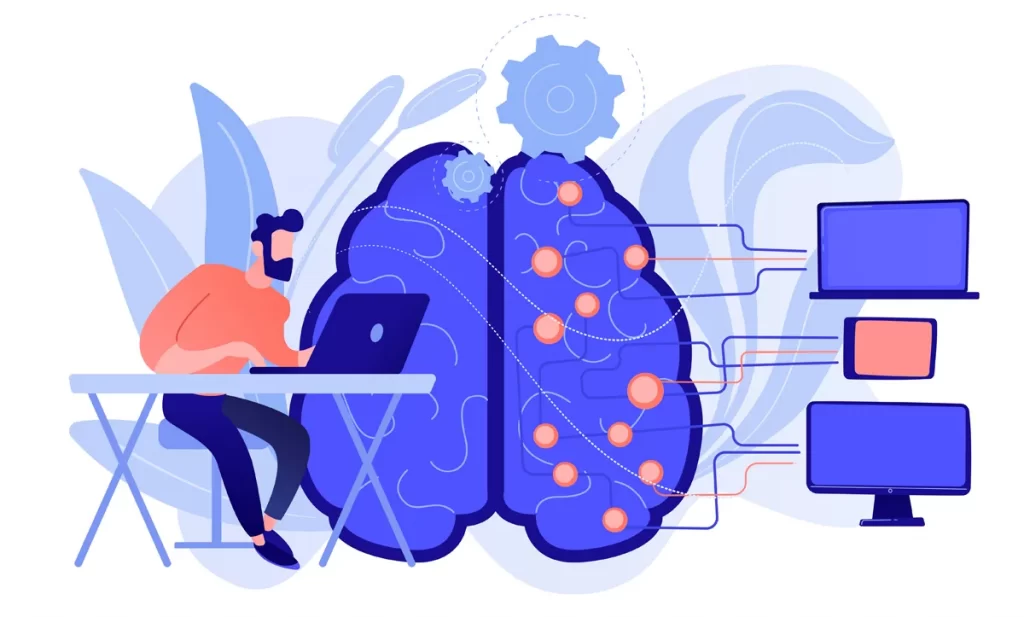Being able to remember more from what we read or learn is something that can have a huge impact on the way we process information and how long it takes us to learn new things.
As a species, we struggled for centuries and have put our most brilliant people on trying to figure out the secret to the perfect memory. While a magical solution still hasn’t been found yet, there are quite a lot of mnemonic memory techniques that have been invented, tried, and tested over the years.
These mnemonic techniques take a bit of practice, a certain level of dedication, and the right mindset, but have proven to be quite effective. What exactly they are, how they work and how much they can help us are all things that I am about to explore further for your benefit.
What is mnemonic memory and what are mnemonics techniques?
Mnemonic memory techniques or mnemonic devices represent a learning technique meant to aid the user to remember bigger chunks of information with better efficiency, speed, and less effort than through traditional learning techniques.
There are several categories of mnemonic techniques and while their efficiency and mechanics differ significantly, they all aim to serve the same purpose: improving the amount of information you retain and the time required to retain it.
What are the types of mnemonic techniques?
- Feature mnemonics: while there are several variations to this technique, the main principle remains that it is usually a lot easier to remember a name for example if you associate it with a prominent feature of the person having that name. Let’s assume you meet a new person name Jason, who has a mustache. You are more likely to remember him as “Mustache Jason” than just Jason.
- Spelling mnemonics: words that are difficult to spell can be more easily remembered if you manage to figure out a pattern, phrase, or rule and use it as a mnemonic device. For example, if you’re having trouble with the word “separate”, you can take advantage of its spelling and create a rule saying “there is a rat in separate”. Spelling mnemonics are very popular and a lot of predefined phrases can be found online. Of course, you can also make up as many as you want or need.
- Rhyming mnemonics: rhyming can play a positive role in how you manage to remember information. It is actually one of the oldest and most commonly used mnemonic memory strategies and works just as well for children and adults. A common example is an age-old phrase “In fourteen hundred ninety-two, Columbus sailed the ocean blue”. Rhyming 1942 with “ocean blue” increases your chances to remember this year tremendously.
- Alliteration mnemonics: since not being able to remember someone’s name is probably one of the most common memory problems we all have, and one of the most awkward ones for that matter, many mnemonic devices have been created to help us better remember people’s names. The alliteration method focuses on the letters in someone’s name and attributing them to certain characteristics the person has. For example, in order to remember that someone is named Tom, you could try to think of them as the Tall, Organized, Mustached guy.
- Song mnemonics: singing the information you want to remember has a very powerful effect on how quickly and well you manage to memorize it. Usually using a simple melodic line we all know from our childhood (like the ABC song) and replacing the original words with whatever you need to remember can ensure that you remember everything you need to remember.
As you can see, the mnemonics techniques are quite varied and work in all kinds of ways. While these simple options I presented above do work pretty well for most people, some much more complex strategies have been developed over the years.
Give Your Reading Experience
An Extra Boost With Basmo
Track the books you read, monitor the time you spend reading and keep notes on your reading habits and how it makes you feel. You can set yourself targets for the time you spend reading and you can get notified whenever you’re behind on your reading time.
What are the most popular mnemonic techniques?
When it comes to more complex strategies to help memorize bigger and more difficult pieces of information, there are certain techniques that have been proven to be more effective.
While some use these mnemonics techniques for studying, they work just as well in your day-to-day life, while reading, or simply as a memory improvement exercise to keep your brain in tip-top shape. People using mnemonics techniques to improve memory performance are even less likely to suffer from memory deficit or mental decline in old age.
The Chunking Technique
Ideal both for long-term and short-term memorization, the chunking mnemonic technique is based on the scientifically proven fact that our brain is incapable of remembering more than 7 pieces of information at a time.
The chunking strategy is a workaround to this limitation our brains are designed with. While the possible mnemonic memory examples are countless, let’s assume for the sake of understanding this technique that we are supposed to remember a 10-digit phone number, let’s say it’s +15417543010.
Instead of trying to remember the whole thing, we can split it into separate chunks like this:
- +1-541
- 754
- 3010
We are more likely to be able to easily remember 3 different sets of 3 or 4 numbers than an entire string of 11 numbers.
The chunking technique is just as effective with other things, not just numbers. For example, if you need to remember by heart the names of all the bones in your arm, you are more likely to be able to do it easily if you split them into smaller categories: the hand, the forearm, and the upper part of your arm and shoulder.
The Loci Technique
The Loci technique, otherwise known as the Method of Loci or the memory palace is yet another mnemonic memory training strategy that has been scientifically proven to be very effective. It is probably one of the oldest mnemonic devices, its use dating back to BCE Greece when actors and orators used it to remember their lines or speeches.
The technique is rather complex, it takes a decent amount of effort and dedication on the user’s part, but is capable of delivering some rather amazing results. The method of Loci uses our spatial memory to increase the amount of information we are able to retain. Those who use it are supposed to recreate a familiar space in our mind’s eye and try to associate certain pieces of information we are supposed to remember with things in that place.
For example, your memory palace could be your own house, which you know like the back of your hand. Imagining your house with certain things written on the walls, certain boxes with information, or simply decorated with things you want to remember is the essence of the Loci technique.
Spaced repetition
Another very common and effective mnemonic technique, spaced repetition is also pretty complex and takes a bit of getting used to. The method was developed a couple of decades ago and has been improved over the years through a series of experiments and studies.
This technique is based on our ability to remember things for certain periods of time and exploits our forgetting curve to maximize the intervals we are required to review certain pieces of information in order to better remember them.
The theory is that reviewing the information we are trying to memorize at constantly increasing intervals has a positive effect on how the information is stored, for how long we manage to remember it, and how quickly we are able to retrieve the information when needed.
How to use mnemonic techniques for Memory Improvement?
Now that you have a decent idea regarding what a mnemonic technique is, what types of techniques can be used, and what the most popular and efficient are, let’s see how you can put everything into practice. For this, we created a simple step-by-step guide on choosing, using, and improving mnemonic devices.
1. Choose the mnemonic technique that is fit to the task at hand
Since the number of available mnemonic devices is rather overwhelming, the first thing to do is decide which one is best suited for your needs. Right off the bat, you need to know that nobody is going to be able to provide you with a precise recipe for choosing the right technique. We are all different, and our minds work differently.
What is important to have is a couple of guidelines to help you make your way towards the most suitable mnemonic techniques for you and your specific tasks.
How to choose the right mnemonic device
Making the right choice from the start can make your break your success in using a mnemonic device. That is why it is extremely important to keep a couple of things in mind whenever you try to decide on what technique is better suited for a certain situation.
- What you need to remember is essential. Match the type of information with the mnemonic technique naturally. Use the chunking technique for numbers or tasks that require you to memorize long pieces of information. Use the spelling technique for words you want to remember the spelling for. Use the feature mnemonic for faces and names.
- Use techniques that get your attention. Whether it’s because they intrigue you or because they are visually interesting in the way they work, make sure to use a mnemonic technique that speaks to you or has a meaning for you.
- Use a technique that makes things easier for you. Through a trial and error process, you will need to figure out what techniques work best for you. Maybe you need a more organized approach or a more visual one. You can only find that out by trying out several techniques.
2. Practice
Regardless of the actual mnemonic technique you will choose, one thing is certain: it will require a certain level of commitment and a lot of practice to get it tuned to its maximum performance. It is going to be a relatively extensive process, but the results are going to blow you away as soon as you get it right.
It’s a good idea to try out the techniques with random information you don’t necessarily need to remember just to test them out. See if you can remember a phone number easily with the chunking technique, see if Loci makes it easier to remember a fictitious to-do list, and so on.
3. Repeat and improve
Once you are comfortable with the choice of mnemonic technique and the results, you will need to persevere. Use it as often as you can, keep track of your progress and performance and constantly try to improve.
Basmo can help a lot at this stage. Even though it is a reading tracking app, and not specifically designed as a memory enhancement tool, it does come packed to the brim with features that will change the way you retain information.
For example, during this stage of your mnemonic strategy improvement journey, you can easily use the journaling feature from Basmo to keep track of your progress. You can write your thoughts, feelings, and important information about the things you are trying to learn.
4. Increase mnemonic devices’ efficiency with Basmo
The journaling feature is not the only tool provided by Basmo that can help with information retention.
Pairing any mnemonic technique with the use of Basmo will increase your chances of being successful in remembering what you are trying to memorize. For example, if you are trying to use the spaced repetition strategy, Basmo will allow you to set the required schedule for your reviewing sessions.
For the Method of Loci, Basmo comes in handy with a quote creator feature which will make it a lot easier for you to visualize the information you will want to remember using your memory palace.
Simply scan pages or paragraphs from the book you are learning from and use the quote creator to generate images you will easily remember.
Final thoughts
Using mnemonic memory techniques is a great way of improving how much, how quickly, and for how long you manage to remember the information you need. Finding the best mnemonic strategy will require some work, but pairing your efforts with the use of Basmo will certainly yield some pretty amazing results.
Machine learning vector created by vectorjuice – www.freepik.com





